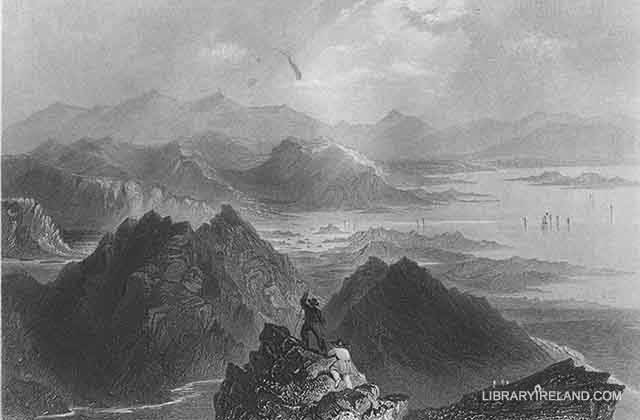Hungry Hill and the Attempted Landing of the French at Bantry Bay
Hungry Hill,[4] the loftiest of his giant brethren, towers in stupendous grandeur before us. The Sugar-loaf, Berehaven, and Glengariff mountains claim our admiration; while, more distant still, Priest's Leap, the Reeks, and Mangerton, show betimes their huge proportions through the cloudy veil that shadows them. The town of Bantry is little better than a fishing-village; it possesses no trade, and the remoteness of its situation affords little hope that it ever will have any. In an historical point of view, it is remarkable as being the place at which, about half a century since, one of the finest appointed armies that ever sailed from the shores of France attempted a landing. In December, 1796, a fleet of seventeen sail, ten of which were of the line, anchored in Bantry Bay. The fleet originally consisted of twenty-five ships of the line, but they had been scattered and dispersed by violent storms, and when the remnant of this proud armament reached the Irish coast, the dissension and jealousy which existed amongst the leaders of the expedition prevented them taking advantage of the opportunity that offered, of landing the troops without opposition. Humanly speaking, had this army landed, nothing could have opposed them: the city of Cork would in three days have been in their hands, and Ireland would have been lost to England, for a time at least. But Providence decreed it otherwise; on Christmas-eve, 1796, a tremendous hurricane came on, by which the French fleet were driven out to sea, and the kingdom saved from the horrors of an invading warfare.
NOTE
[4] Hungry Hill has acquired some notoriety as being the place where Mr. Crofton Croker laid the scene of Daniel O'Rourke's Adventures in his Flight to the Moon.

